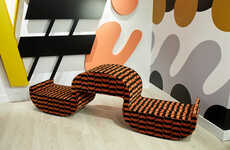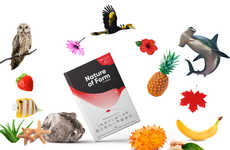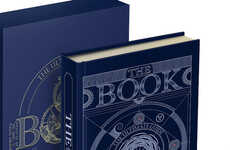
'Cultural Connectives' Links Arabic and Latin Languages
Christopher DeLuca — May 17, 2011 — Pop Culture
References: rana.im & brainpickings.org
'Cultural Connectives', a book by Rana Abou Rjeily, bridges the divide between Arabic and Latin-based languages by cleverly comparing their typography. The paired down aesthetic of the book is compelling in its simplicity, with a minimalist color palette palette that primarily involves green.
'Cultural Connectives' details the rules of writing and pronunciation in Arabic for a Western audience. The collection of stylized images and texts helps the reader understand how the languages differ by comparing them side by side.
Rana Abou Rielily's 'Cultural Connectives' speaks to the need for there to be more cross-cultural understanding. The book serves as an easy entry point and induction into the Arabic for the uninitiated. A must-have for those into design and language.
'Cultural Connectives' details the rules of writing and pronunciation in Arabic for a Western audience. The collection of stylized images and texts helps the reader understand how the languages differ by comparing them side by side.
Rana Abou Rielily's 'Cultural Connectives' speaks to the need for there to be more cross-cultural understanding. The book serves as an easy entry point and induction into the Arabic for the uninitiated. A must-have for those into design and language.
Trend Themes
1. Cross-cultural Understanding - The trend of promoting cross-cultural understanding by comparing typography of different languages is growing, opening up opportunities for designing similar educational resources to bridge the gap between different cultures.
2. Simplistic Design Aesthetics - The trend of employing minimalist yet compelling design aesthetics like the pared-down color palette in 'Cultural Connectives' increases customer engagement, providing opportunities for integrating such design elements in various visual media products.
3. Multilingual Education - The trend of enhancing multilingual education by highlighting linguistic differences through creative design elements like typographic comparison, offers ample opportunities to create innovative teaching and learning resources with visual-based learning materials.
Industry Implications
1. Publishing - The publishing industry can leverage the trend of creating cross-cultural linguistic resources like 'Cultural Connectives' to create a more inclusive and diverse book catalog, promoting intercultural competence.
2. Graphic Design - The graphic design industry can embrace the trend of minimalist yet compelling design aesthetics by incorporating similar design features across various fields, creating visually-stunning yet straightforward designs.
3. Education - The education industry can make use of the trend of multilingual education by creating innovative teaching resources with visual elements, promoting immersive and engaging experiences for language learners.
5.3
Score
Popularity
Activity
Freshness























